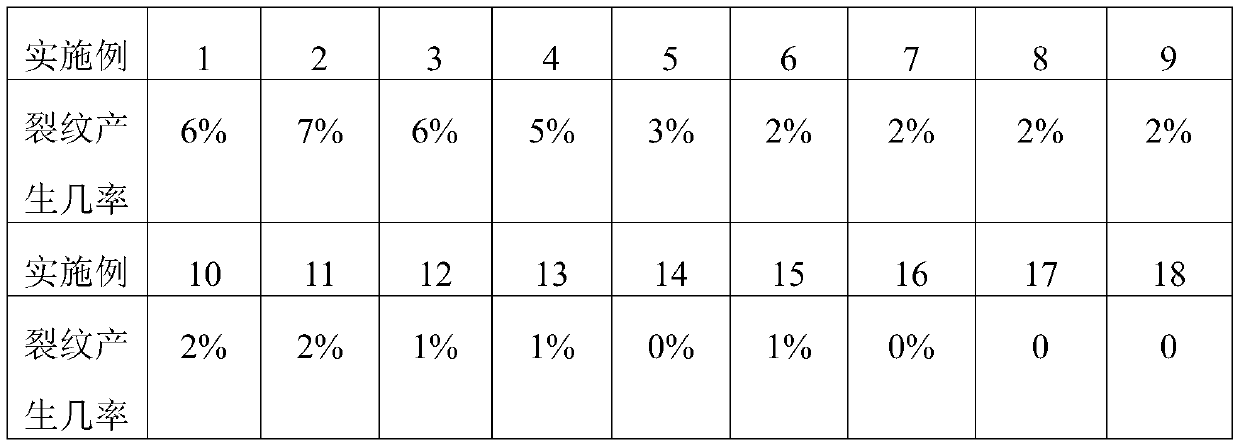Method for Avoiding Cracking of Polystyrene Hollow Microspheres in Drying Process
A polystyrene microsphere and polystyrene technology, applied in the direction of coating, can solve the problems of reduced mechanical properties, narrowed application field, increased surface roughness, etc.
- Summary
- Abstract
- Description
- Claims
- Application Information
AI Technical Summary
Problems solved by technology
Method used
Image
Examples
Embodiment 1
[0032] A method for avoiding cracking of polystyrene hollow microspheres during drying, comprising the following steps:
[0033] Step 1. Add polyvinyl alcohol aqueous solution with a mass fraction of 1% into the rotary evaporator of the rotary evaporator, and then place the water-containing polystyrene microspheres in the rotary evaporator; set the temperature of the rotary evaporator to 75 ° C, rotate The speed is 25 rpm for 3 hours, and the solution containing polystyrene hollow microspheres is poured into a grading sieve to obtain high-temperature cured microspheres; the weight ratio of the polystyrene microspheres and polyvinyl alcohol aqueous solution is 1:10 ;
[0034] Step 2. Wash the high-temperature solidified microspheres with distilled water several times, then place them in ethanol for full exchange for 1 hour, discard the microspheres that sink to the bottom of the ethanol, and collect the microspheres that float on the surface of ethanol;
[0035] Step 3, drying...
Embodiment 2
[0038] A method for avoiding cracking of polystyrene hollow microspheres during drying, comprising the following steps:
[0039] Step 1. Add polyvinyl alcohol aqueous solution with a mass fraction of 5% into the rotary evaporator of the rotary evaporator, then place the water-containing polystyrene microspheres in the rotary evaporator; set the temperature of the rotary evaporator to 100 ° C, rotate The speed is 45rpm for 5h, and the solution containing polystyrene hollow microspheres is poured into a grading sieve to obtain high-temperature cured microspheres; the weight ratio of the polystyrene microspheres and polyvinyl alcohol aqueous solution is 1:50 ;
[0040] Step 2. Wash the high-temperature solidified microspheres with distilled water several times, then place them in ethanol for full exchange for 3 hours, discard the microspheres that sink to the bottom of the ethanol, and collect the microspheres that float on the surface of ethanol;
[0041] Step 3, drying the colle...
Embodiment 3
[0044] A method for avoiding cracking of polystyrene hollow microspheres during drying, comprising the following steps:
[0045] Step 1, take a mass fraction of 3% polyvinyl alcohol aqueous solution and add it to the rotary evaporator of the rotary evaporator, then place the water-containing polystyrene microspheres in the rotary evaporator; set the temperature of the rotary evaporator to 85 ° C, rotate The speed is 35rpm for 4h, and the solution containing polystyrene hollow microspheres is poured into a grading sieve to obtain high-temperature cured microspheres; the weight ratio of the polystyrene microspheres containing water to the polyvinyl alcohol aqueous solution is 1:30 ;
[0046] Step 2. Wash the high-temperature solidified microspheres with distilled water several times, then place them in ethanol for full exchange for 2 hours, discard the microspheres that sink to the bottom of the ethanol, and collect the microspheres that float on the surface of ethanol;
[0047...
PUM
| Property | Measurement | Unit |
|---|---|---|
| particle diameter | aaaaa | aaaaa |
Abstract
Description
Claims
Application Information
 Login to View More
Login to View More - R&D
- Intellectual Property
- Life Sciences
- Materials
- Tech Scout
- Unparalleled Data Quality
- Higher Quality Content
- 60% Fewer Hallucinations
Browse by: Latest US Patents, China's latest patents, Technical Efficacy Thesaurus, Application Domain, Technology Topic, Popular Technical Reports.
© 2025 PatSnap. All rights reserved.Legal|Privacy policy|Modern Slavery Act Transparency Statement|Sitemap|About US| Contact US: help@patsnap.com



